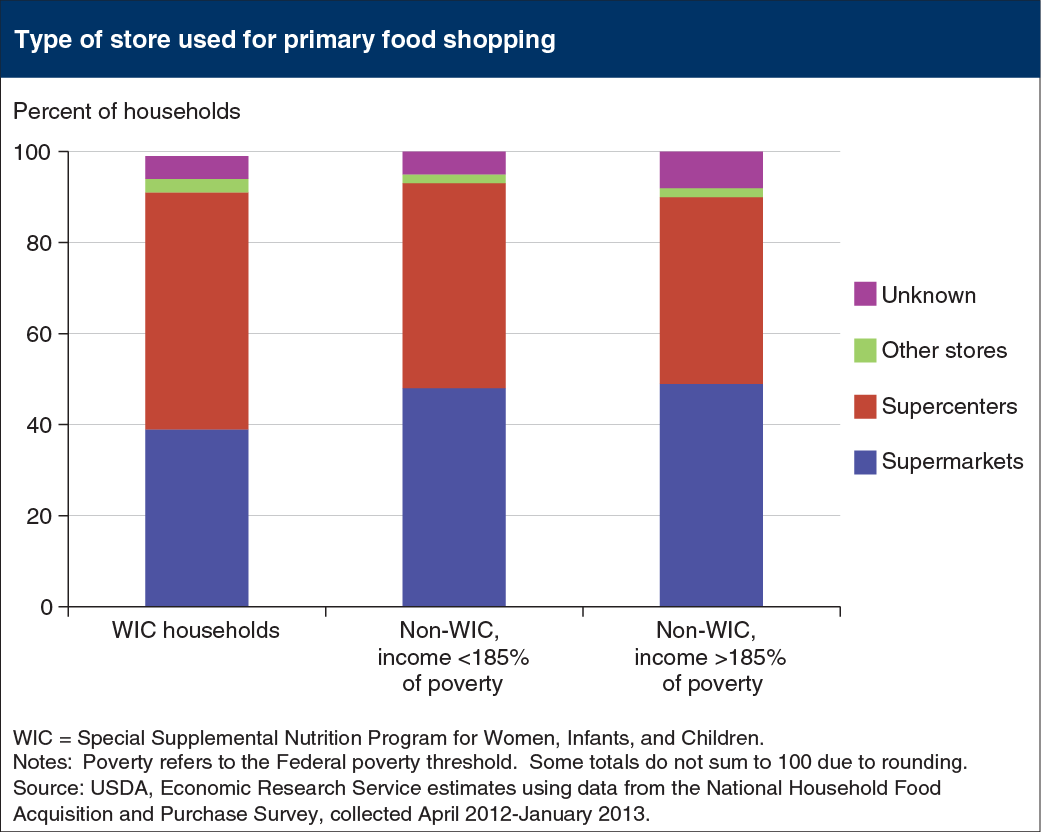WIC households favor supercenters for their primary grocery shopping
- by Economic Research Service
- 8/11/2015

Data from a new USDA-funded survey, National Household Food Acquisition and Purchase Survey (FoodAPS), show that households that participate in USDA’s Special Supplemental Nutrition Program for Women, Infants, and Children (WIC) are more likely to use supercenters for their primary food shopping than non-WIC comparison households (non-participating households that contain either a pregnant woman or a child under the age of 5). Over half of WIC households (52 percent) used a supercenter for their main food shopping, compared with 45 percent of non-WIC comparison households with incomes below 185 percent of the poverty threshold and 41 percent of higher-income non-WIC comparison households. Because WIC households are larger and more likely to contain multiple young children compared with non-WIC comparison households, WIC households may be more enticed to shop at supercenters in order to purchase larger-sized products or take advantage of one-stop shopping. This chart appears in “Most U.S. Households Do Their Main Grocery Shopping at Supermarkets and Supercenters Regardless of Income” in the August 2015 issue of ERS’s Amber Waves magazine.

